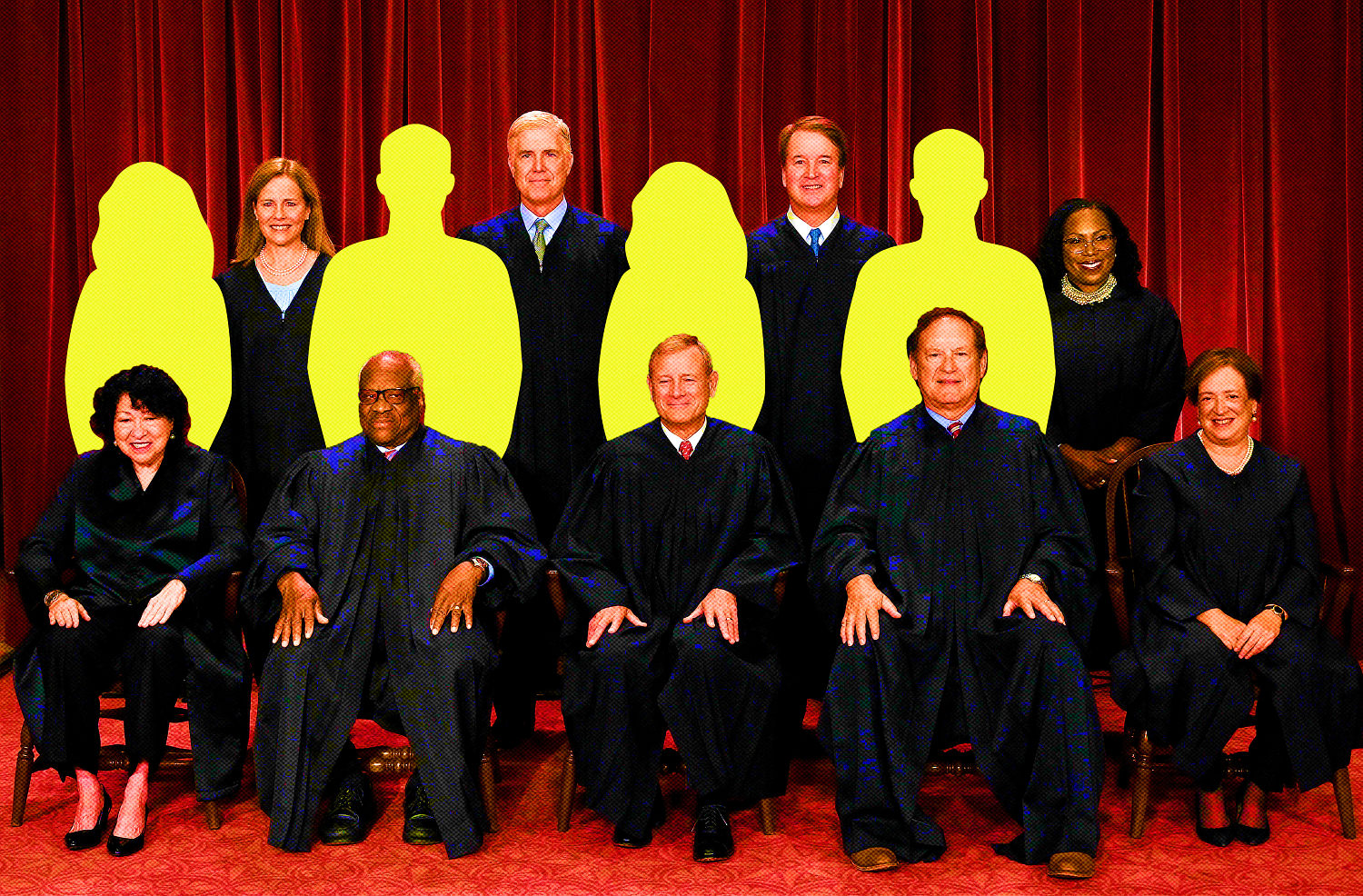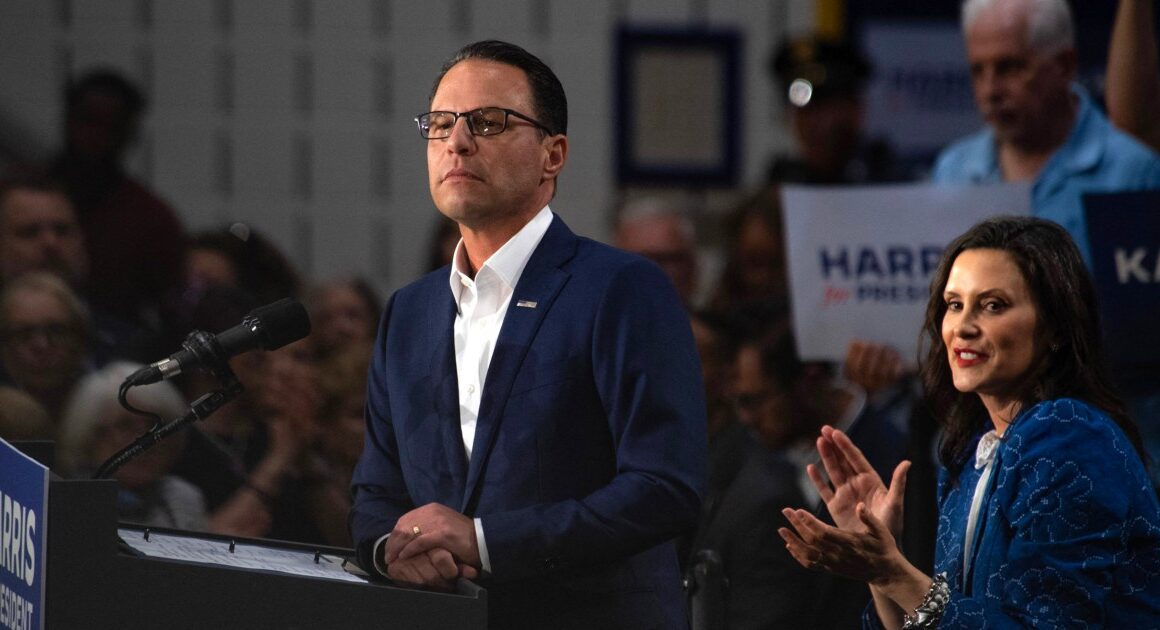
President Joe Biden is preparing to endorse a new package of Supreme Court reforms, a major shift for someone who has been wary about taking on the third branch of government. It’s a welcome move that could finally help rein in a court that has attempted to place itself above the other two branches.
It’s also a tacit acknowledgement from Biden that the conservative supermajority isn’t about to temper itself, even as Chief Justice John Roberts publicly frets about the court’s reputation.
It’s long past time for Democrats to accept that the justices are political figures and the Supreme Court is a political arena.
The changes Biden is considering include “legislation to establish term limits for justices and establishing an updated code of ethics that would be binding and enforceable,” according to NBC News. These are both strong ideas that I wish Biden had endorsed sooner — but they still fall short of what would be the most effective way to transform the court’s workings. It’s long past time for Democrats to accept that the justices are political figures and the Supreme Court is a political arena. Accordingly, rather than run from GOP outrage about “packing the court,” it is in their best interest to campaign on the promise to increase the number of seats on the court.
Despite the backlash against President Franklin D. Roosevelt’s failed effort to add Supreme Court seats in 1937 that has kept such proposals at bay, history is well on the side of court expansionists.
The size of the court has been nowhere near static over its lifetime. The only requirement on that front under the Constitution is that it have one chief justice. Beyond that, the number of seats has fluctuated over the years, first as the country grew, then as political parties began vying for control over the judiciary.
Under the Judiciary Act of 1789, the Supreme Court was established with five associate justices alongside the chief. The act also set up a federal judiciary with three “circuits” that each had two justices assigned to it, along with a district judge. The justices would then “ride circuit,” traveling within their jurisdiction to hear cases, a practice that many early justices absolutely loathed. The number of circuits was soon expanded to six in 1802, requiring a single justice to travel to a smaller area, but only slightly muffling the grumbling from the jurists.
Over the next several decades, with the country growing as it expanded westward, so too did the court. By 1807, a seventh circuit was added to encompass Ohio, Kentucky and Tennessee. Another justice was added as well, for the first time tying Supreme Court seats to geographical regions, as the justice was required to reside within one of the three states in the circuit. At its biggest, the Supreme Court consisted of 10 justices to preside over 10 geographical circuits — but in the aftermath of the Civil War, congressional Republicans eliminated the 10th Circuit. Congress also dropped the number of justices to seven to reduce the number of Southerners serving, another point in favor of the size of the court being inherently wrapped up in politics.
The court didn’t shrink that much though, as the reduction was meant to take effect as vacancies opened and were left unfilled. Instead, before that could happen, Congress boosted the number into the current total of nine justices in 1869 to align with the nine circuits. That may have been the last major reorganization of the circuit system, but since then two of them have been split in half, giving us the present 11 numbered circuits. Plus, there are two additional unnumbered circuits: the District of Columbia Circuit, which handles cases within the federal capital’s jurisdiction, and the Federal Circuit, a special appeals court that hears cases related to certain administrative areas.
The number of seats has fluctuated over the years, first as the country grew, then as political parties began vying for control over the judiciary.
At present, each of the nine justices is assigned to at least one of these circuits — Brett Kavanaugh oversees both the 6th and 8th circuits, while Samuel Alito sits over the 3rd and 5th circuits. (Roberts himself sits over the D.C. Circuit and the Federal Circuit.) While justices are no longer required to travel to hear cases within their given territory, they are responsible for handling things like emergency requests and other administrative matters for appeals that come up from their circuits. That’s why you see, for example, Alito’s name on orders to allow an execution to go through in Louisiana.
It is therefore entirely reasonable to argue that given the number of issues that certain members of the court must bear, it would be much more equitable to increase the number of justices to share that load. It would just so happen that in doing so, Democrats would be able to rebalance the court after its steady swing to the right over the last several decades. Doing so would shift the court from a 6-3 conservative supermajority to one that has seven liberals and six Republican-appointed justices.
There are two interrelated problems, though, that would come from Democrats making this specific argument. First, linking the court’s expansion to the circuits is a move that will work only the once, at least not without a major reorganization of the circuit level. There is a proposal from some Western Senate Republicans to add a 12th Circuit to relieve some of the stress of the 9th, which encompasses the entire Pacific time zone. While that could add yet another justice under a circuit-based setup, this would provide an even number of seats.
Linking the court’s expansion to the circuits is a move that will work only the once, at least not without a major reorganization of the circuit level.
Should a 12th Circuit ever be established, I think the best course would be to keep the seats at 13, allowing the chief justice to reclaim oversight of the D.C. Circuit and Federal Circuit.
Second, and more important for Democrats in this case, is that timing is key here. Because the court-expansion method I’ve described is entirely constitutional and precedented, it would also be entirely fair for Republicans to pull it off themselves. While some may be content with their current dominance, I’d be shocked to see a GOP trifecta reject cementing an even more unsurmountable grasp on the Supreme Court.
And once the viability of this proposal is an accepted fact on both sides, it becomes a race to see who next captures both Congress and the White House and has the political will to carry it out. Democrats squandered their chance to pull this off in Biden’s first two years, even after Senate Republicans held a seat open in President Barack Obama’s final year. Now is the time for Democrats to start laying the groundwork to transform the court at the next possible opportunity.
![]()






